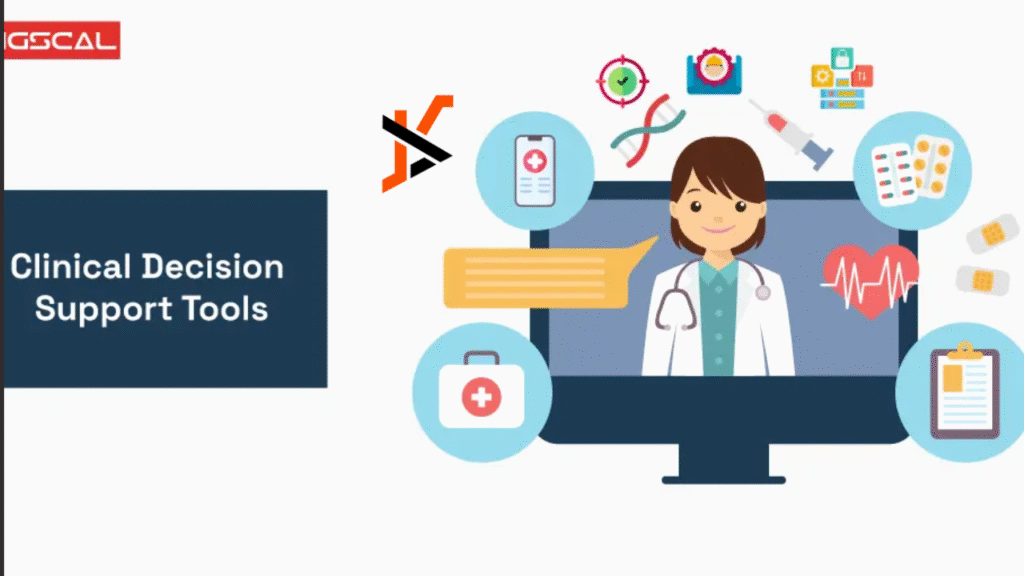Clinical Decision Support (CDS) tools built into ePrescribing systems are changing how healthcare providers prescribe medications. These smart systems reduce errors and increase safety by delivering real-time, data-driven recommendations tailored to each patient.
What is Clinical Decision Support in ePrescribing?
CDS systems act like digital copilots for electronic health records professionals. They instantly analyze a patient’s data—such as age, kidney function, existing prescriptions, and known allergies—against massive databases of medical knowledge and safety guidelines.
Rather than interrupt workflows, advanced CDS platforms are embedded directly into prescribing software. They surface relevant alerts or suggestions right when needed, helping clinicians make safer choices without slowing them down.
These platforms aren’t static. They learn from new research, real-world outcomes, and updated safety alerts. This means they evolve in real time, always reflecting the latest evidence-based best practices.
Catching Dangerous Drug Interactions Early
One of the most critical functions of CDS tools is spotting harmful drug interactions before prescriptions are finalized. These systems have Comprehensive allergy tracking libraries of drug-drug, drug-food, and drug-condition interactions—far more than any clinician could recall on their own.
When a risky combination is detected, the system generates clear alerts, explaining the issue and offering safer alternatives. From minor administration timing issues to severe, potentially fatal drug combinations, CDS systems flag them all before harm is done.
Prioritizing Alerts by Risk Level
Not all alerts are equal. Good CDS systems use severity-based alert tiers to avoid overwhelming physicians with unnecessary warnings.
- High-risk alerts demand immediate attention and must be acknowledged before moving forward.
- Moderate alerts provide useful context, allowing physicians to weigh risks and benefits.
- Low-priority notifications are informative, designed to educate without disrupting workflow.
This smart filtering system helps doctors stay focused on what matters most, reducing “alert fatigue” while maintaining safety.
Personalized Dosing That Adapts to Each Patient
One-size-fits-all doesn’t work in medicine. CDS tools adjust dosages based on critical patient-specific data such as age, weight, and organ function.
- Pediatric prescriptions are calculated using weight or body surface area, preventing dangerous overdoses.
- Elderly patients benefit from tailored guidance that avoids medications known to cause issues in older adults.
- Patients with kidney or liver impairments get adjusted dosages to avoid drug build-up and toxicity.
These tailored suggestions ensure medications are both safe and effective.
Protecting Against Allergies and Adverse Reactions
Modern CDS systems track more than just known drug allergies—they look at past adverse reactions and known intolerances, too.
These platforms don’t just match drug names. They also understand chemical relationships, catching cross-sensitivities like reactions between penicillin and other beta-lactams. This reduces the risk of allergic reactions that could be missed by human oversight.
They also help distinguish between actual allergies and side effects, ensuring that clinicians don’t unnecessarily restrict treatment options.
Identifying Cross-Sensitivity Risks
Advanced CDS tools go deeper by recognizing molecular similarities between drugs. They can flag risks from chemically related medications, even when they aren’t part of a standard allergy list.
Doctors are also informed about the severity of past reactions, helping them make smart calls—whether to avoid certain drugs entirely or proceed cautiously with monitoring.
When needed, the system proposes alternative treatments that align with both safety and therapeutic goals.
Embedded Guidelines for Smarter Prescribing
CDS systems come loaded with clinical guidelines from trusted medical authorities. This helps providers stay aligned with the latest treatment standards for a wide range of conditions—from diabetes to infections.
- They suggest first-line medications.
- Recommend alternatives when first-line treatments fail.
- Guide step-by-step decision-making, including when to refer to a specialist.
In antimicrobial stewardship, for example, CDS tools promote responsible antibiotic use, suggest shorter courses, and support culture-based therapy—critical in fighting resistance.
Staying Compliant with Safety and Quality Standards
Many healthcare organizations track prescribing quality through metrics. CDS tools help by:
- Encouraging use of cost-effective generics.
- Highlighting drugs that meet safety benchmarks.
- Providing insights into prescribing trends across the patient population.
These data-driven tools improve safety, reduce costs, and help providers meet performance goals.
Medication Reconciliation Made Accurate
CDS supports medication reconciliation by cross-checking medication lists across multiple systems and identifying inconsistencies. This is especially valuable during patient transitions—like hospital discharge or switching providers.
The tools ensure that new prescriptions don’t conflict with existing treatments and that critical medications aren’t missed or duplicated.
Conclusion: A Safer, Smarter Future for Prescribing
CDS systems embedded in ePrescribing software are transforming how clinicians prescribe medication. They offer personalized, evidence-based guidance at the point of care—reducing risks, improving outcomes, and helping physicians practice safer medicine with greater confidence.

